
Copernical Team
Asteroid samples from Bennu contain carbon and water
 Initial studies of the 4.5-billion-year-old asteroid Bennu sample collected in space and brought to Earth by NASA show evidence of high-carbon content and water, which together could indicate the building blocks of life on Earth may be found in the rock. NASA made the news Wednesday from its Johnson Space Center in Houston where leadership and scientists showed off the asteroid material for the
Initial studies of the 4.5-billion-year-old asteroid Bennu sample collected in space and brought to Earth by NASA show evidence of high-carbon content and water, which together could indicate the building blocks of life on Earth may be found in the rock. NASA made the news Wednesday from its Johnson Space Center in Houston where leadership and scientists showed off the asteroid material for the Removal of magnetic spacecraft contamination within extraterrestrial samples easily carried out, researchers say
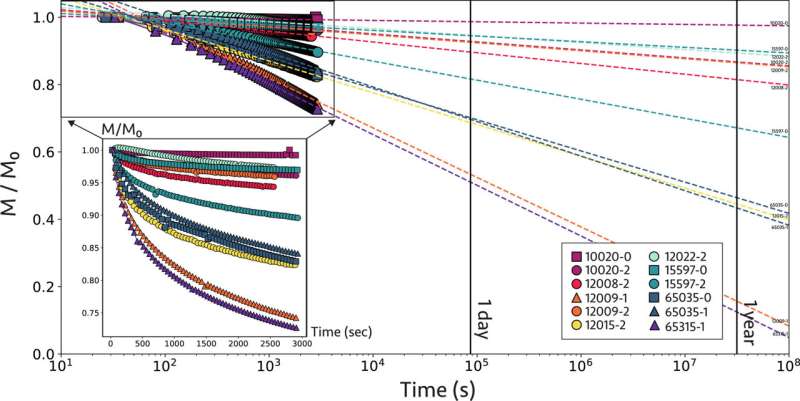
NASA asteroid sample contains life-critical water and carbon
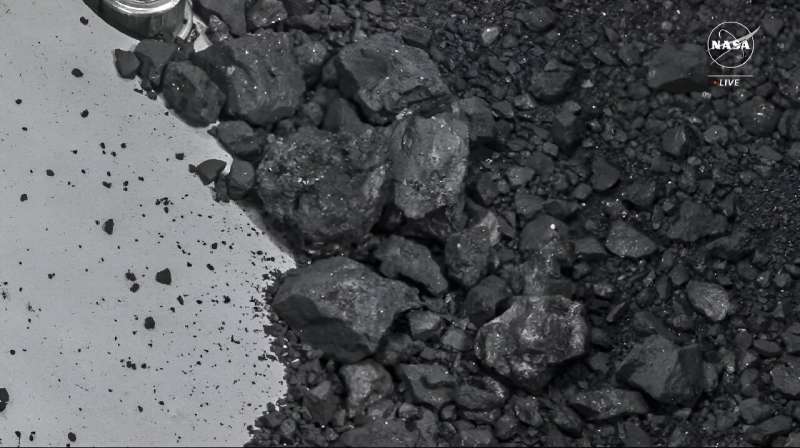
A sample collected from the 4.5-billion-year-old asteroid Bennu contains abundant water and carbon, NASA revealed on Wednesday, offering more evidence for the theory that life on Earth was seeded from outer space.
The discovery follows a seven-year-round-trip to the distant rock as part of the OSIRIS-REx mission, which dropped off its precious payload in the Utah desert last month for painstaking scientific analysis.
With Psyche, a journey to an ancient asteroid is set to begin
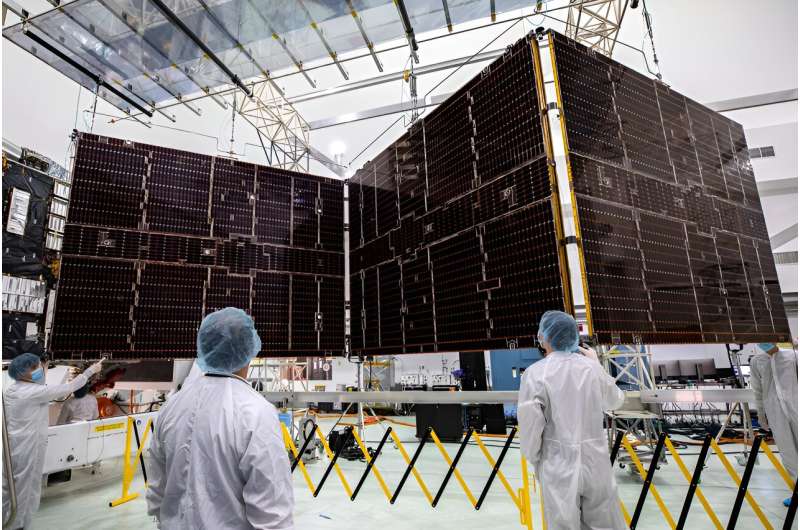
If all goes well, on Thursday morning a NASA mission with extensive connections to MIT will be headed to a metal world.
Psyche, a van-sized spacecraft with winglike solar panels, is scheduled to blast off aboard a SpaceX Falcon Heavy rocket tomorrow at 10:16 a.m.
High flying International Space Station experiment pushes boundaries of knowledge

Floating at 250 miles above the planet, the International Space Station (ISS) provides a unique laboratory to conduct pioneering investigations.
By being permanently in orbit, it allows scientists to carry out experiments with the help of on-board astronauts and gain new insights into challenges we face on Earth.
This April, a machine designed at Strathclyde and built by UK-firm QinetiQ, was launched from Cape Kennedy in Florida into orbit on the station for the cutting edge "particle vibration" experiment.
The station, a joint program between U.S., Russia, Japan, Europe (ESA) and Canada, is equipped with a host of modern research equipment.
The experiments needed three months of continuous activities, a period of microgravity that only the ISS can provide.
"Microgravity" removes the effect of gravity to see the effects of other forces that can be hard to reveal on Earth and enabled researchers to test the behavior of solid particles dispersed in a liquid in a variety of operating conditions.
New materials
The trial showed that by heating and shaking complex fluids—liquids that contain fine solid particles or other liquid droplets—in space's microgravity environment, new materials can be created.
Journey to a metal-rich world: NASA's Psyche is ready to launch
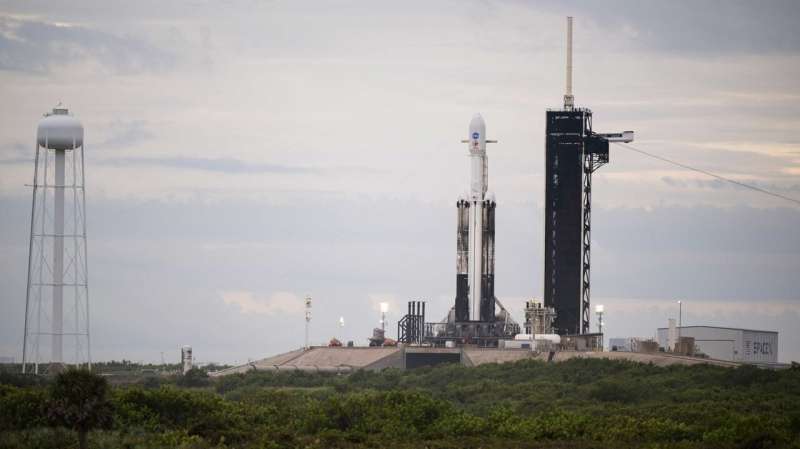
Huge rocket motors arrive at Los Angeles museum for space shuttle Endeavour display
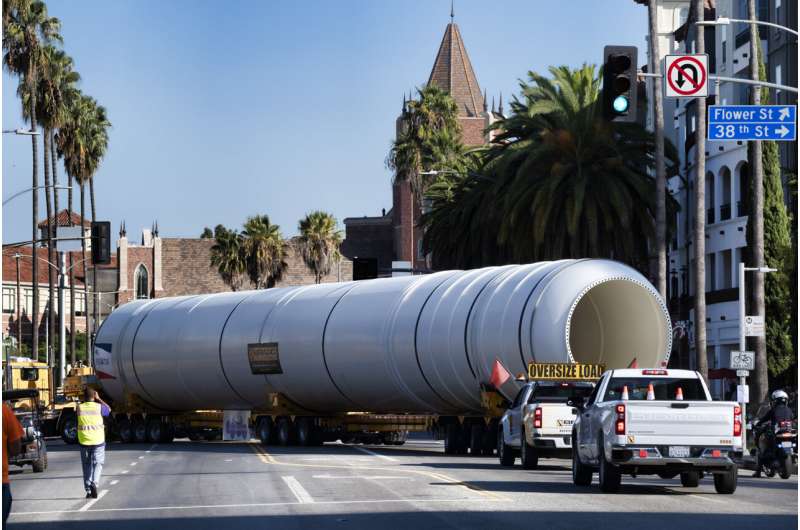
NASA to unveil first images of historic asteroid sample
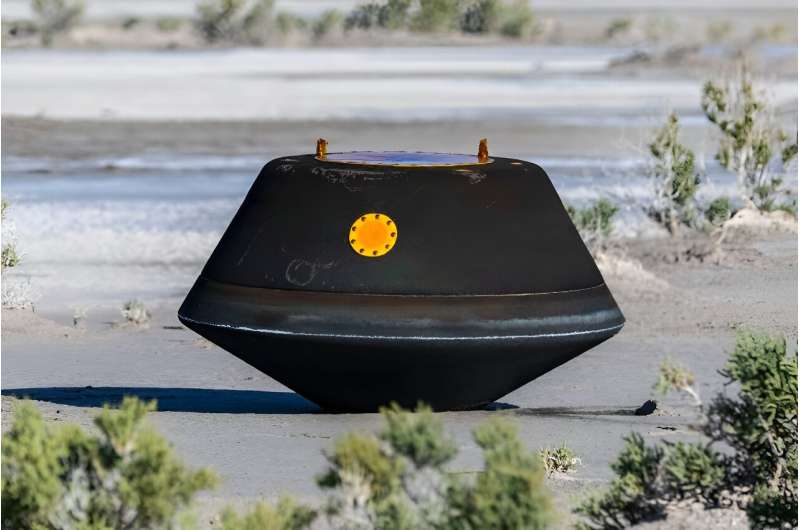
NASA is set to reveal on Wednesday the first images of the largest asteroid sample ever collected in space, something scientists hope will yield clues about the earliest days of our solar system and perhaps the origins of life itself.
The OSIRIS-REx mission collected rock and dust from the asteroid Bennu in 2020, and a capsule containing the precious cargo successfully returned to Earth a little over two weeks ago, landing in the Utah desert.
Fly across Mars’s ‘labyrinth of night’ with Mars Express
 Video:
00:00:00
Video:
00:00:00
Nestled between the colossal martian ‘Grand Canyon’ (Valles Marineris) and the tallest volcanoes in the Solar System (the Tharsis region) lies Noctis Labyrinthus – a vast system of deep and steep valleys that stretches out for around 1190 km (roughly the length of Italy here on Earth).
This video visualises a flight over the eastern part of Noctis Labyrinthus as seen by Mars Express’s High Resolution Stereo Camera (HRSC). It presents a perspective view down and across this fascinating landscape, showing distinctive ‘graben’ – parts of the crust that have subsided in relation to their surroundings. The intense
Spire Global selected by accelerate digitalization across the maritime industry
 Spire Global, Inc. (NYSE: SPIR) has been was selected by MAN Energy Solutions ("MAN-ES"), a global player within the marine, energy and industrial sectors, to provide weather data and real-time automatic identification system (AIS) vessel-tracking data.
According to McKinsey and Co, the shipping industry can decrease fuel consumption by 1% through optimized vessel execution and performance
Spire Global, Inc. (NYSE: SPIR) has been was selected by MAN Energy Solutions ("MAN-ES"), a global player within the marine, energy and industrial sectors, to provide weather data and real-time automatic identification system (AIS) vessel-tracking data.
According to McKinsey and Co, the shipping industry can decrease fuel consumption by 1% through optimized vessel execution and performance 
